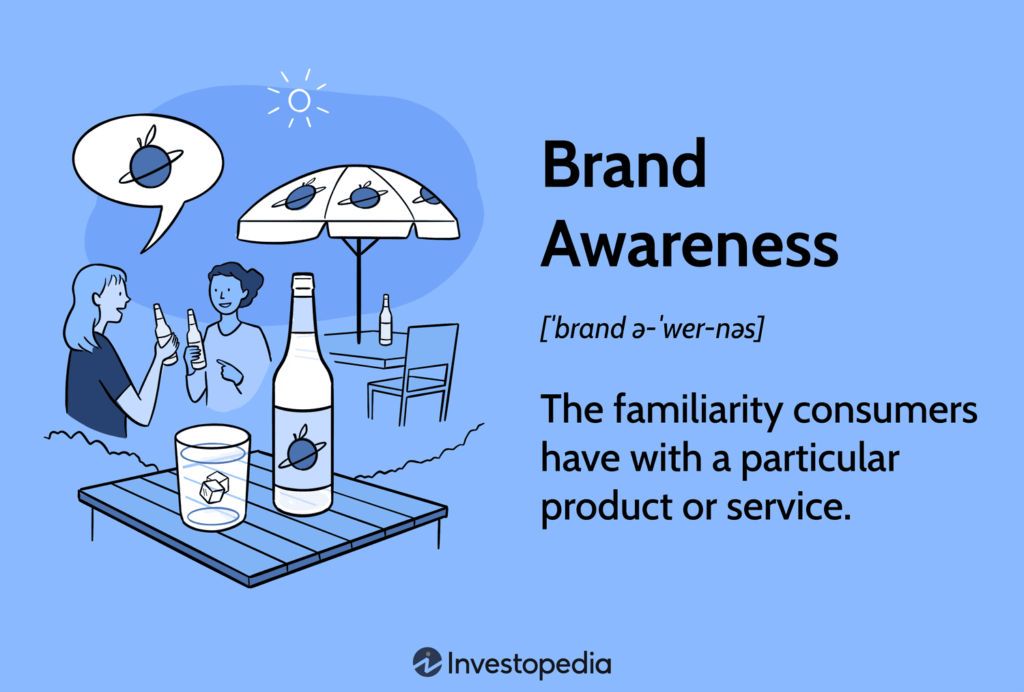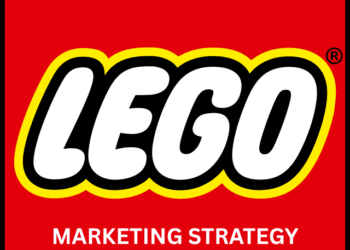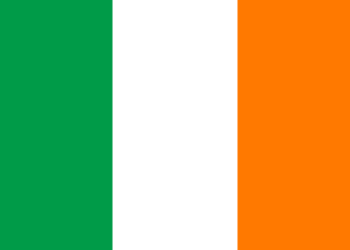Impact of Brand Awareness on Consumer Behavior – Business Research Methods: Research Proposal Sample
- 20 November 2024
- Posted by: OAH
- Category: Business & Management

This is a research proposal for Business Research Methods, focusing on the impact of brand awareness on consumer behavior. It investigates how raising brand awareness influences purchasing decisions and brand loyalty. The proposal highlights effective marketing strategies to build brand equity and drive consumer engagement.
The sample research proposal will not only help students understand how to write a research proposal but also will help them understand the type of exceptional work we provide to students seeking assignment help.
Need Help With Research Proposal or Dissertation Writing? Contact our experts today.
Also Read Business Research Proposal Sample: The Impact of AI on Business Performance in India
Business Research Methods: Research Proposal Sample
To investigate the importance of raising Brand Awareness and its Impact on Consumer Behavior
Module: Business Research Methods
University: University of Bedfordshire
Word Count: 2399
Table of Contents
1.0 Abstract
By being aware of others and your strengths and weaknesses, you can build confidence and realize that your differences are okay too. This business research aims to investigate the importance of raising Brand Awareness and its impact on Consumer Behavior. More precisely, we are trying to find which steps are required to increase awareness about the brand among consumers. This research is focused on the assumption that all these dimensions of customer-based brand image and loyalty will have an impact on consumers’ perceptions of the brand. This provides a solution to brand awareness via media store sellers which may help the sellers to promote their products in light of consumer behavior.
Here you will find all you need to know about increasing brand awareness, including a handy brand awareness definition and a brand awareness strategy guide.
Among the three dimensions, brand loyalty seems to have the minimum brand equity rating by consumers than alternate dimensions. Although, the dimension seems to have an impact on consumer perceptions of the brand. To ensure a product or brand’s market success, awareness levels must be managed across the entire product life-cycle – from product launch to market decline. Many marketers regularly monitor brand awareness levels, and if they fall below a predetermined threshold, the advertising and promotional effort is intensified until awareness returns to the desired level.
2.0 Keywords
Brand awareness, brand equity, brand recognition, and consumer behavior.
3.0 Introduction
Nowadays people have a demanding lifestyle. They do not have time to stop for a moment and feel their own will. All the different intentions that buyers make when purchasing can be sometimes stressful and the possibility and demand on how to act and what to say can create extra chaos. Sometimes, consumers need someone to give them the proposal of a product, or just take a product among many, without even bringing the product into the perspective of their needs. Therefore, brand awareness is very important in such an instant.
Brand Awareness is the extent to which customers can recall or recognize a brand. Brand awareness is related to the functions of brand identities in consumers’ memory and can be measured by how well the consumers can identify the brand under various conditions (Rossiter,1987). Brand awareness is one of the major brand assets that add value to the product, service, or company. Investing in building brand awareness can lead to sustainable competitive advantages, thus, leading to long-term value (Biel,2013).

The Internet has created channels for both business managers and consumers to attain their particular objectives as it empowers organizations to achieve their clients worldwide, and consumers of all age gatherings utilize this channel to research, select, and purchase products and services from organizations as far and wide as possible. Businesses and consumers must exploit this data. Presently very nearly all business are doing their awareness in contrast route by traditional media which is the newspapers, magazines, billboards, print advertising, TV, radio, and online by utilizing their sites as live showrooms of their products and services because organizations have watched an addition in client fragments for online shopping.
4.0 Research Objectives
1. Highlight the significance of brand awareness of products and how it can improve their market success rate.
2. Provide that a direct relationship exists between brand awareness and consumer purchase design-making behavior.
5.0 Research Questions
1. Which factors have profound influences on consumer behavior towards products and services?
2. What factors besides brand awareness affect the choice of the brand at the first purchase in an unfamiliar environment?
3. Which strategies may be used to improve the brand value and image awareness of the cooperative?
6.0 Literature Review
Branding is a popular subject having a significant amount of work done by academics as well as researchers on new product launches and brand awareness. Brands are also more powerful in terms of forging a relationship with the customer that is sustainable and profitable compared to regular unbranded products (De Chernatony, L., et al.,2010).
Černikovaite (2011) argues that brand awareness can be a prerequisite to buying the product. The high quality of the goods or services encourages users to buy and produce means an additional profit. Brand associations are typical consumer attitudes to a brand, the company delivers its advertising. Such associations can enrich the brand by new features, perceived by the creation of added value, providing consumers with a positive impact on safety or exclusivity, increasing the value of the brand. New products can increase their awareness in the marketplace amongst consumers through several different strategies employing new as well as traditional media. Traditional media-based advertising and promotions using ATL techniques have the widest reach in the market but can be expensive to manage for new products. As a result, new BTL launch techniques, (Salcido T.,2011), are innovatively employed by businesses to introduce new brands into the marketplace in a more personal way in which consumers in the market can relate to the new brands more effectively while reducing the overall costs incurred. Popular new media strategies that are being employed by businesses include using internet and mobile-based network marketing strategies. (Jenkins, H., 2006).
The customer’s intention to buy the product depends on the value and benefits that the customer perceives to get from the product (Zeithaml, 1988). Many factors lead the consumers to the step where they purchase the product, and one of the factors is the satisfaction of the consumer with the product/brand from the previous purchase. The level of satisfaction will thus decide the position of the brand in the consideration set of the consumer for the next buying decision.
In short, this research undertakes a comprehensive exploration of the relationship between brand awareness and various brand outcomes, including the consumer’s purchase behavior.
7.0 Brand Equity
Brand equity is the sum of assets and liabilities relating to a brand, its name, and logo, and the sum or difference is the value that is offered by the product or service or a company or the company’s customers. For the assets and liabilities to affect brand equity, they have to be related to the name or logo of the brand. If the brand’s name or logo changes, then, it can either have a positive or a negative impact on the assets and liabilities of the brand, with some of them getting transferred to the new name and logo. Brand equity stands on the assets and liabilities and it can differ from factor to factor such as brand loyalty, brand name awareness, how a customer perceives the quality of a brand, and other proprietary assets such as patents and trademarks (David, 1991).
Some marketing researchers have concluded that brands are one of the most valuable assets a company has, (Neumeier, 2006) as brand equity is one of the factors which can increase the financial value of a brand to the brand owner, although not the only one. Elements that can be included in the valuation of brand equity include (but are not limited to): changing market share, profit margins, consumer recognition of logos and other visual elements, brand language associations made by consumers, consumers’ perceptions of quality, and other relevant brand values.
8.0 Marketing Implications of Brand Awareness
Consumers do not learn about products and brands from advertising alone. When making purchase decisions, consumers acquire information from a wide variety of sources to inform their decisions. After searching for information about a category, consumers may become aware of a larger number of brands which collectively are known as the awareness set (Chon, 2000).
The process of moving consumers from brand awareness and a positive brand attitude through to the actual sale is known as conversion (Hatten, 2012). While advertising is an excellent tool for creating awareness and brand attitude, it usually requires support from other elements in the marketing program to convert attitudes into actual sales. Other promotional activities, such as telemarketing, are vastly superior to advertising in terms of generating sales. Accordingly, the advertising message might attempt to drive consumers to direct sales call centers as part of an integrated communications strategy (Commonwealth of Australia,2014). Many different techniques can be used to convert interest into sales including special price offers, special promotional offers, attractive trade-in terms, or guarantees.
For new products, the main advertising objective should be to create awareness with a broad cross-section of the potential market. When the desired levels of awareness have been attained, the advertising effort should shift to stimulating interest, and desire.
9.0 Creating and Maintaining Brand Awareness
Having a solid, trusted brand is important for any company to thrive. If the target audience doesn’t know or trust the brand, how will we ever increase the customer base and sales? In a world where consumers rely on extensive research and others’ opinions before making a purchase, brand trust is everything. Once a consumer bonds to the brand, they’re more likely to make repeat purchases with little to no forethought –– which then bridges the gap between trust and loyalty.
To increase the probability of a product’s acceptance by the market, it is important to create high levels of brand awareness as early as possible in a product or brand’s life cycle. To achieve top-of-mind awareness, marketers have traditionally relied on intensive advertising campaigns, especially at the time of a product launch (Belch, 2009). When a brand becomes established and attains the desired awareness levels (typically outlined in the marketing plan), the brand advertiser will shift from an intensive advertising campaign to a reminder campaign. The objective of a reminder campaign is simply to keep target audiences aware of the brand’s existence and to introduce new life into the brand offer (Business Dictionary).
Bloggers have become key influencers in important consumer goods and services including fashion, consumer electronics, food and beverage, cooking, restaurant dining, and bars. For example, a recent survey by Collective Bias showed that when it comes to product endorsements digital influencers are more popular than celebrities. Findings showed that only 3% of participants said they would consider buying a celebrity-endorsed item, in comparison to 60% who said they had been influenced by a blog review or social media post when shopping.
10.0 Research Methodology
To carry out the prospective results and information, a qualitative research methodology was chosen for this study. The qualitative study does not focus on numbers, but on observations and the content of the interview; Zikmund (2000) described qualitative research as “stories, visual portrayals, meaningful characterizations, interpretations, and other expressive descriptions.” he also indicated that: “The purpose of quantitative research is to determine the quantity or extent of some phenomenon in the form of numbers”. The reason for choosing qualitative data was the study aims to discover the impact of online brand awareness on consumers’ purchasing decision process. The study more focuses on finding the existence of the theory rather than examining the scale.
Telephone interview allows us to access direct information sources without geographic limitations to get reliable data. Through interviews, we can have a general idea about how brand awareness is involved in consumers’ purchasing decisions, we can have a further understanding of the implications of consumers’ behavior and the reason behind their specific behavior.
To make sure there is no indicated meaning in the questions, and that they can be properly used in interviews, we will discuss with the supervisor and other fellows about the interview questions. Therefore 2 basic themes, which are based on, the study purpose and research questions are in the interview questions which allows us to questions that are under the theme and adapted according to the responses. Theme 1 is trying to find out what consumers check on the brand. This information also counts as the ones consumers get from the brand they are purchasing. This theme indicates the purpose of research question 1, and it aims at finding out which steps of consumers’ purchasing decision process brand awareness is involved in. Theme 2 aims to find out the reasons behind the specific steps of the consumers’ purchasing decision process. It helps to understand consumers’ motivation to make the consumer aware of the brand.
11.0 Findings/Limitations
The choice to use a questionnaire-based survey on the telephone was because qualitative analysis is always better than quantitative. Due to a lack of time and geographical limitations, I cannot conduct a face-to-face interview. The findings are limited to the chosen interviewer of the United Kingdom only. The conclusions drawn at the end are based on my opinion only.
12.0 Ethical Consideration
The consideration of ethics in research, and general business for that matter, is of growing importance. It is, therefore, critical that you understand the basics of ethical research and how this might affect your research project. Ethically challenging situations may emerge if researchers have to deal with contradicting issues and choose between different methodological strategies in which conflict arises. In such cases, disagreements among different components such as participants, researchers, researchers’ discipline, the funding body, and the society may be inevitable (Truscott,2004).
All responses provided shall be treated with confidentially and will not be given to any third parties for whatever reason.
13.0 Conclusion
Brand awareness could be raised through internet marketing tools, which notify, remind, and convince customers about their brands, products, or services. The client may encounter the brand in various ways, for example, reviewing videos, playing games, spending time on the site communicating with other customers, and watching advertisements.
The current research demonstrates a positive association between brand awareness and consumer preference for the brand, as well as brand market outcome. The importance of the promotion efforts of marketers cannot be ignored in this context. The main purpose of promotion and advertising is to make the customer recognize their brand, and product immediately and give it a top position in their consideration set by having a strong recall ultimately leading them towards the product purchase. Publications in various media channels strengthen its position in the consumer’s mind, and the brand becomes recognized. Brand awareness is created through advertising, promotion, selling, and public relations through the internet. Internet marketing includes not only advertising on websites, but also e-mails, and social networks.
14.0 Gantt Chart
| Task | January | February | March | April | May |
| Submit research proposal | Y | ||||
| Feedback on proposal | Y | ||||
| Speak to the supervisor and discuss topic | Y | ||||
| Research further on a dissertation topic | Y | ||||
| Discuss data collected with the supervisor | Y | Y | |||
| Collection and analysis of new updated data | Y | ||||
| Assemble all data and prepare a reference list. | Y | ||||
| Assemble all data and prepare a reference list | Y |
15.0 References
Rossiter, J.R. (1987). Advertising and Promotion Management. New York: McGraw-Hill Series in Marketing available at https://en.wikipedia.org/wiki/Brand_awareness
Biel, Alexander L. Aaker David A. (31 October 2013). Brand Equity and Advertising: Advertising’s Role in Building Strong Brands.
De Chernatony, L., McDonald, M.H.B., Wallace, E., (2010), Creating Powerful Brands, Routledge. Available at https://ijbssnet.com/journals/Vol_6_No_1_Januaryr_2015
ČERNIKOVAITĖ, M. (2011). Brand value measurement models. Social Science Studies, v. 3, n. 3, p. 967-981.
Jenkins, H., (2006), Convergence Culture: Where Old and New Media Collide, NYU Press.
Salcido, T, (2011), Building Brand Awareness through New Media, available at http://www.mymagneticblog.com/building-brand-awareness-through-new-media/.
A. Aaker, David (1991). Managing Brand Equity. Under ‘What is Brand Equity?’ Section, first para: Simon & Schuster. ISBN9781439188385.
Neumeier, Marty (2006). The Brand Gap: How to Bridge the Distance Between Business Strategy and Design, Berkeley, CA: New Riders Publishing. Available at https://en.wikipedia.org/wiki/Brand_equity
Chon, K.Y., Pizam, A. and Mansfeld, Y., Consumer Behavior in Travel and Tourism, 2nd ed, 2000, New York, Haworth, pp 86-87
Hatten, R.S., Small Business Management: Entrepreneurship and Beyond, Mason, OH, South-Western Cengage, 2012, p.317
ACCC, The Comparator Website Industry in Australia, Commonwealth of Australia, 2014, p. 8
Belch, G, Belch, M.A, Kerr, G. and Powell, I., Advertising and Promotion Management: An Integrated Marketing Communication Perspective, McGraw-Hill, Sydney, Australia, 2009, p.126
Business Dictionary (online)
Singh, N., “Celebrity Vs Shopper” Harper’s Bazaar (Australia), 2 April 2016
Zikmund, William G. (2000), “Business research methods” 6. ed, ISBN: 0-03-025817, The Dryden Press, Harcourt College Publishers
Truscott D. Fieldwork, participation, and practice: ethics and dilemmas in qualitative research. Sci Ed. 2004:811–3.










